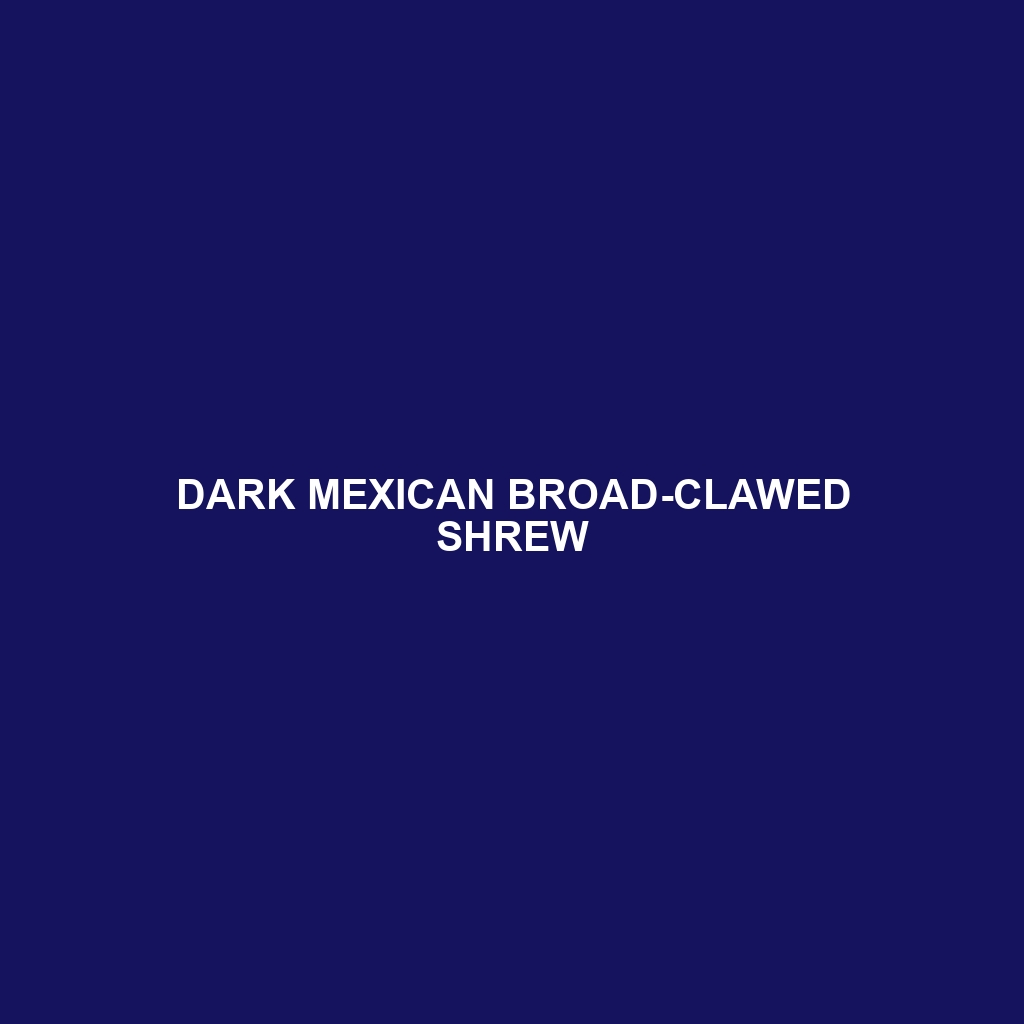Dark Mexican Broad-clawed Shrew
Common Name: Dark Mexican Broad-clawed Shrew
Scientific Name: Sorex merriami
Habitat: The Dark Mexican Broad-clawed Shrew is primarily found in the mountainous regions of Mexico, particularly in the Sierra Madre Oriental and Sierra Madre del Sur. This species typically inhabits moist environments, such as coniferous and mixed forests, as well as grasslands at elevations ranging from 1,500 to 3,500 meters above sea level. These habitats provide the necessary moisture and cover for this elusive mammal.
Physical Characteristics: The Dark Mexican Broad-clawed Shrew is recognized for its compact size, averaging between 7 to 10 centimeters in length, excluding its tail. Its fur is soft and dark, often appearing gray to brown in color, with a lighter underbelly. Notable features include broad claws adapted for digging and a long, pointed snout, which aids in foraging. The species possesses small, beady eyes and are generally characterized by their slim, agile bodies.
Behavior: This shrew is primarily nocturnal, spending its active hours searching for food. It is a solitary creature, often marking its territory with scent. The Dark Mexican Broad-clawed Shrew is known for its rapid movements and can quickly navigate through dense vegetation, making it a highly elusive species. It employs a variety of vocalizations to communicate with other shrews, especially during the mating season.
Diet: The diet of the Dark Mexican Broad-clawed Shrew mainly consists of insects, spiders, and other small invertebrates. It is an insectivore that forages primarily on the forest floor, using its keen sense of smell to locate prey hidden under leaves and soil. This species may also consume plant matter and seeds, contributing to its omnivorous diet.
Reproduction: The breeding season for the Dark Mexican Broad-clawed Shrew generally occurs in the spring, with females giving birth to 2 to 6 offspring after a gestation period of about 21 to 27 days. The young are born blind and hairless, relying on their mother’s care until they mature at approximately 4 to 6 weeks of age. Mating pairs remain together temporarily, after which the males typically leave to find new territories.
Conservation Status: According to the International Union for Conservation of Nature (IUCN), the Dark Mexican Broad-clawed Shrew is currently listed as “vulnerable.” Habitat loss due to deforestation and land conversion for agriculture poses significant threats to its population. Conservation efforts are essential to maintain its natural habitat and ensure the survival of this unique species in the wild.
Interesting Facts: The Dark Mexican Broad-clawed Shrew plays a crucial role in controlling insect populations, making it an important species in the ecosystem. Additionally, this shrew is noted for its ability to tolerate cooler temperatures, a unique adaptation that helps it thrive in mountainous regions.
Role in Ecosystem: As an insectivore, the Dark Mexican Broad-clawed Shrew plays a vital role in the ecosystem by regulating insect populations, which contributes to the overall health of its habitat. It serves as prey for larger predators, thus maintaining the balance of the food web. Through its foraging habits, the shrew also aids in soil aeration and nutrient cycling, promoting plant growth in its environment.
